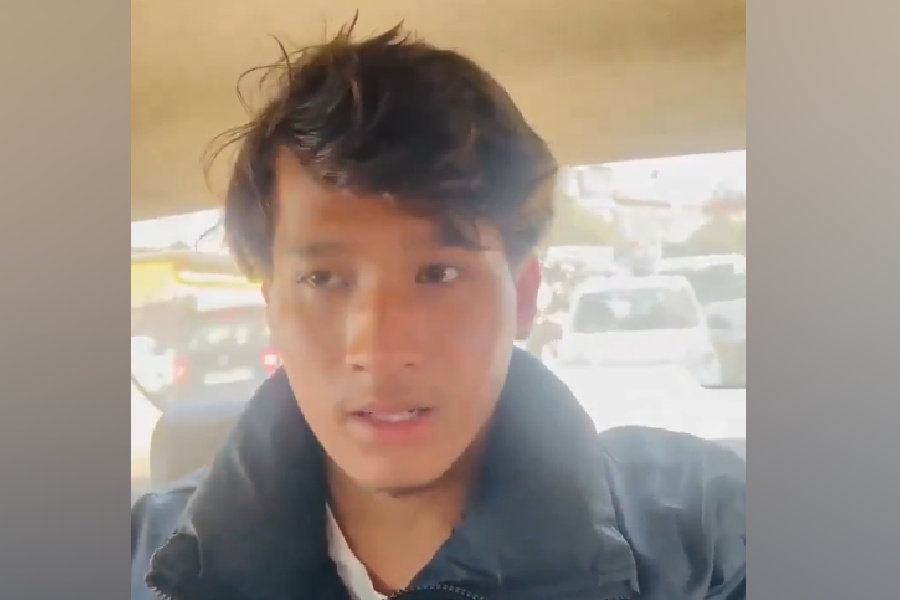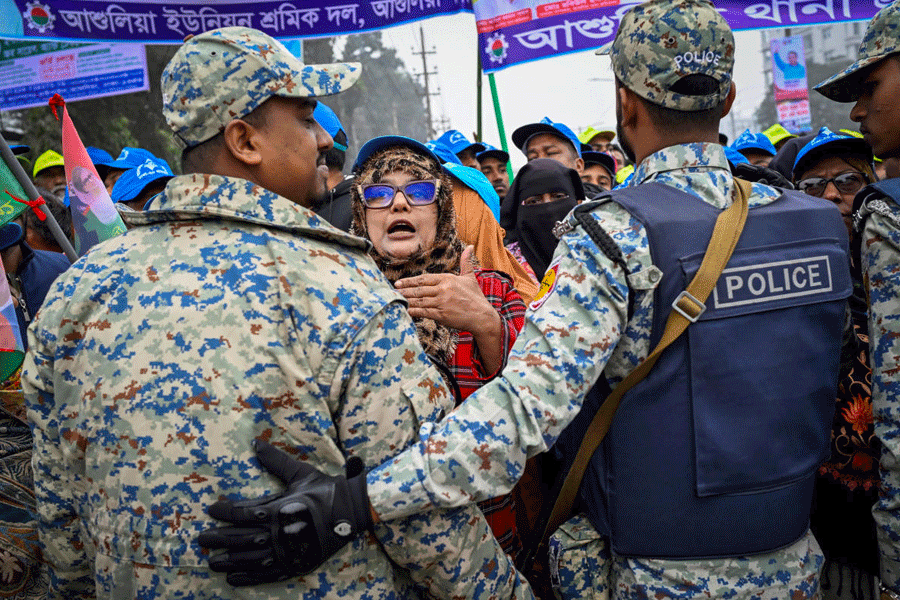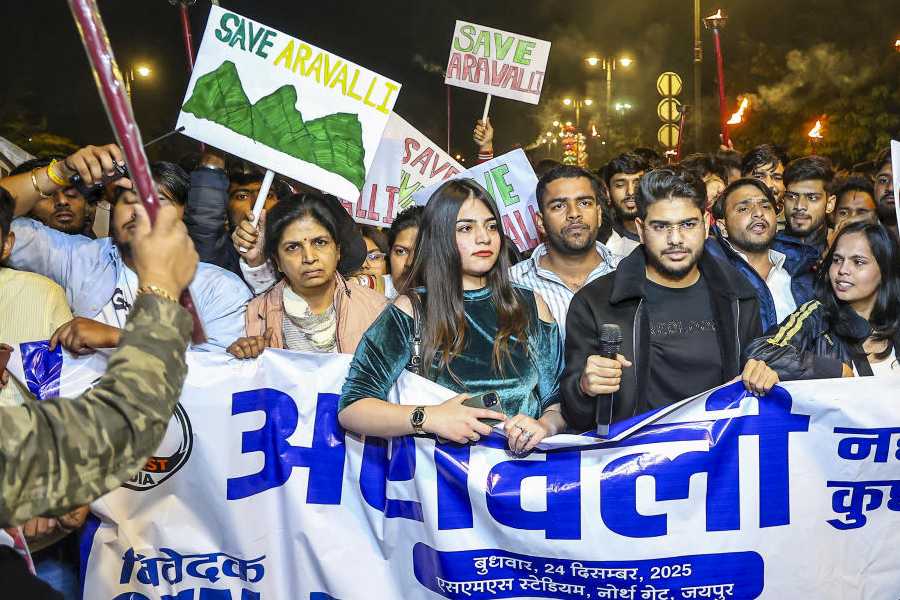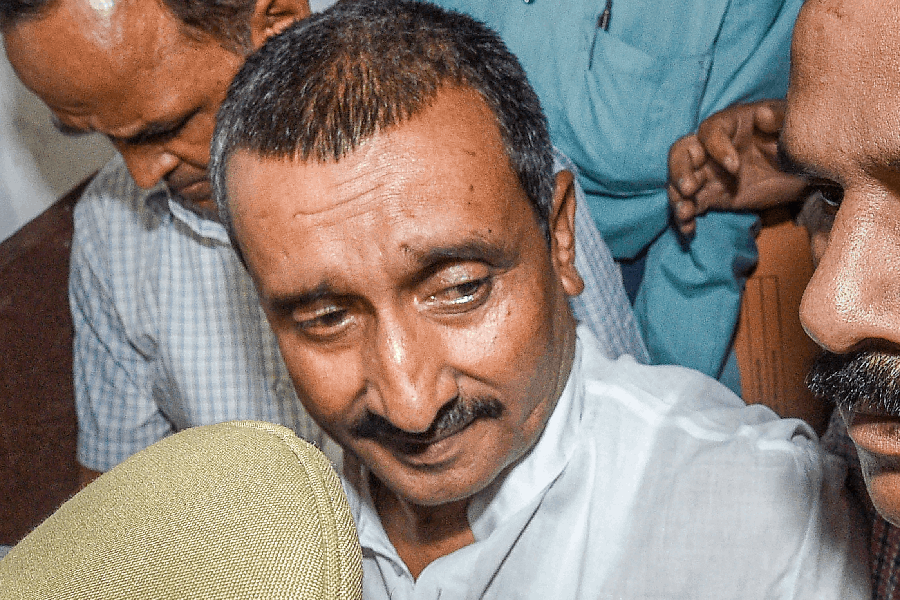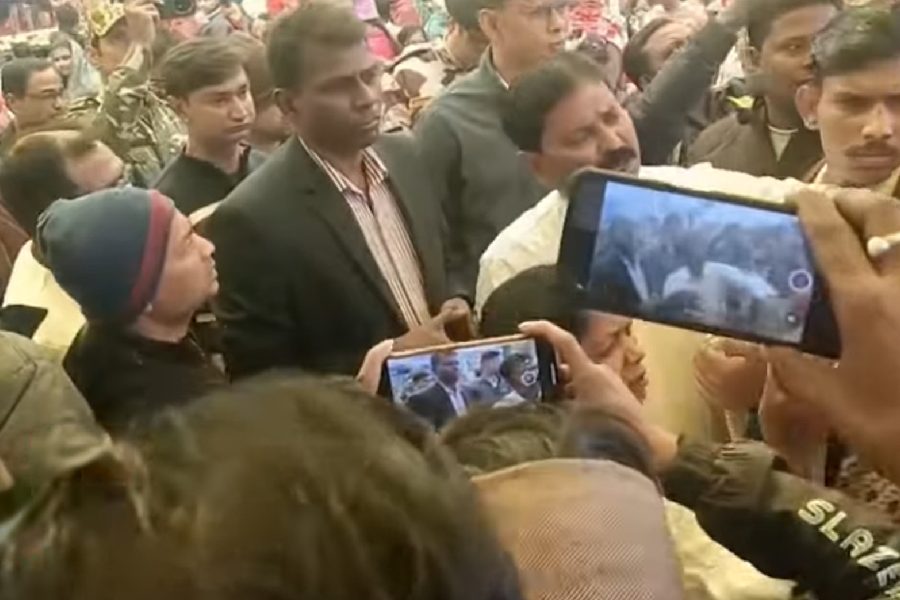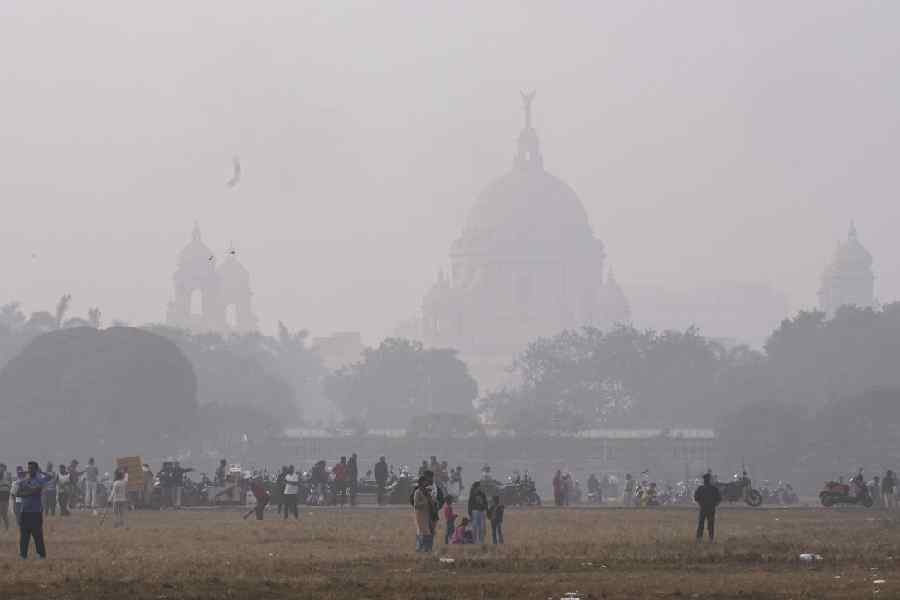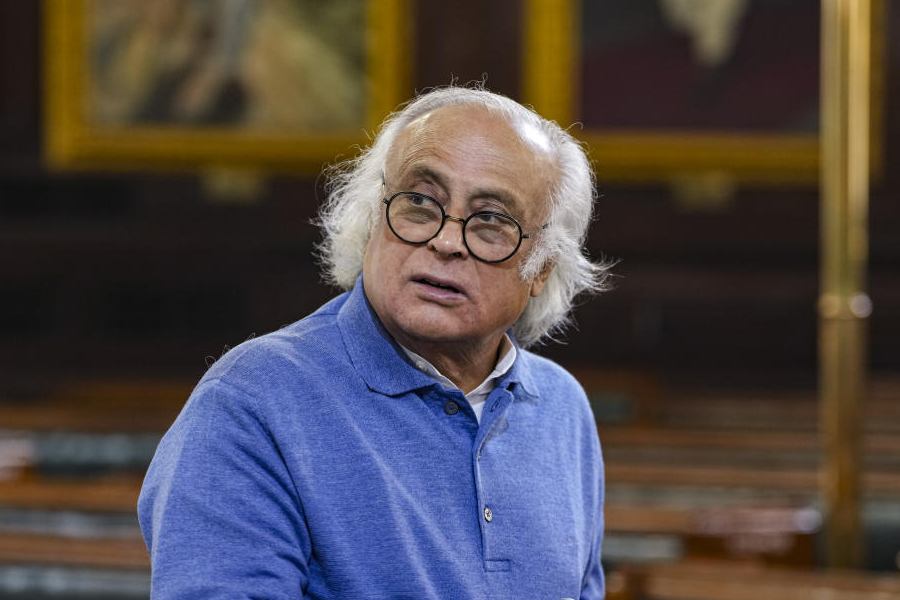Jagdalpur (Bastar), April 7: Maoist snipers lined a range of low hills nearly 4km long, took the high ground that dominated a road and a jungle, camouflaged pressure bombs with dried leaves and booby-trapped boulders as well as trees, designing the killing fields into which CRPF jawans were lured and massacred on Tuesday morning.
An account of the battle given by one of three or four survivors of the CRPF company wiped out yesterday not only paints a chilling description of the firefights but also reveals insights into positional warfare tactics that the Maoist guerrillas employed. The survivor asked not to be identified and spoke hesitantly.
In the “Battle of Mukram” — Mukram was the village the CRPF company slept overnight (so said the survivor) — that took place between 5.45am and 10.15am on Tuesday, some 80km south and west of Sukma in Dantewada district, the Maoists did not hit and run.
The guerrillas stood and fought, overpowered, outgunned and mowed down the jawans who had come hunting for them in this war searing through the centre of the country. Then they took away the AK-47 and Insas rifles, the mortars, magazines of ammunition and bullet-proof jackets from their victims.
The hunter had not only become the hunted. In this chapter of Operation Green Hunt, the state forces were also beefing up the rebels’ arsenal.
It was the single-biggest insurgent strike, according to the commandant of the Counter Terrorist and Jungle Warfare School in Chhattisgarh, Brigadier B.K. Ponwar, who was a jungle warfare expert for the army in the Northeast and in Jammu and Kashmir and is in the business for 40 years.
The trooper who gave the account is here this afternoon, in the Maharani Medical College and Government Hospital, running between the mortuary — identifying the bodies of 15 of his comrades that were flown in by an Indian Air Force helicopter this morning — and the intensive care unit of the surgical ward where three injured soldiers are admitted.
 |
| A long row of Tricolour-draped coffins with bodies of CRPF jawans at Jagdalpur in Chhattisgarh on Wednesday. (PTI) |
The burly and muscular soldier says he survived because he brought up the rearguard from the camp in Mukram after three ambushes in which most of his company was nearly wiped out.
He is describing the battle even as constables Pramod Singh, Raj Bahadur and Baljit Singh are writhing in pain, heavily sedated and tired from the questioning by their superiors.
The soldier is also trying, in another section of the hospital, to speak above the noise of an electric saw that is cutting planks of plywood to be nailed as lids to the coffins into which the cut-up bodies of his comrades have been dumped after being wrapped in white sheets and tied by nylon strings.
“There were some 1,400 or 1,500 of them,” whimpered the constable. “I saw women, maybe a hundred or more and Maoist commandos who wore black dungarees.” The “Maoist commandos” were on a large hillock adjoining the road to its right just in front of which a Mine Protected Vehicle (MPV) with only the driver was blown up. Those on the hillock had the maximum firepower.
“They fired more than 20,000 rounds, I would say,” he said, waving his hands with his fingers splayed to depict a deadly shower.
The survivor said he saw “500 or 600” in black dungarees. He called them commandos. But they may not have been so.
The Maoist outfit does draw a distinction between members of the Peoples Liberation Guerrilla Army (PLGA), that is better trained and more heavily armed, and the Peoples’ Militia.
These statistics are doubtful. In a battle, the defeated often exaggerate the strength of the victors. Also, in the fog of a firefight in which the narrator of the story was trying to save himself, an imprecision can creep into the account. But here he is, a trained soldier, after all, who has been with his battalion, the 62nd, in these jungles for more than a year now.
Asked the name of the MPV driver, the choking man said: “What to say of him now.” But they were mostly from the same region of western Uttar Pradesh.
In the mortuary, where the post-mortems are over and the bodies have been bundled and tied in sheets of white and dumped into the plywood boxes, the coffins have computer printouts stuck on the sides:
• No.0635183583 Constable Satender Singh s/ (son of) Shri Jising Yadav; village Nagala Birbal; Farukhabad (UP)
• No.0725267475 Constable Navneet Kumar s/ Suresh Kumar; village Raipur Phoonea; p. Aurangabad, dist Bunoor (UP)
• No.035023602 Constable Manoj Kumar Pandey s/ Tribhuwan Pandey; vill Janinkataghar, P.S. Nizamabad, district Azamgarh (UP)
• 085180388 Constable Rajesh Kumar s/ Ram Saran Singh vill Birahimpur, PO Bibiya Jalalpur, P.S. Gursahai Garhi, dist Kannauj (UP)
• 040080271 Constable Sachin Kumar; P.S. Khaskhounda, dist Meerut (UP)
• 045023007 Constable Udaiveer Singh, vill Nagla Bansarabad, dist Mathura
• 031231182 Constable Anant Kumar Singh s/ Rajeshwar Singh, vill Dugawan, P.S. Asmoli, dist Moradabad (UP)
• Constable Nahar Singh from district Hathras
• Constable Dharampal Singh, P.S. Sikandarabad, dist Badaun.
Six bodies for other coffins are being readied. A lorry of the CRPF’s 80th battalion has to make two trips from the helipad. An IAF Mi 17 helicopter flies over the hospital and lands at the nearby police lines. It will take the bodies to Raipur where an An 32 transport plane will fly them to Delhi.
That was the routine followed for the 61 bodies taken from the mortuary here last evening and this morning. It is some time before all 15 coffins are taken away and the survivor of the battered company of the 62nd battalion gets a break.
His company was created after drawing the stragglers from the Alpha, Charlie and Golf companies on Sunday. They were to search two villages. That they had done during the patrol. On Tuesday, they set out again. The survivor was on sentry duty for some of the night and following regular procedure was asked to bring up the rear.
By quarter to six, the alarm had been raised. An RT (radio transmitted) message had been relayed to them saying that a QRT (Quick Reaction Team) from Dornapal on the other side was also reaching the spot. When he entered the battlefield with two others, he was fired at from a hillock on the left. So he crossed the road and turned right. And that is where he saw, what he says, the fearsome sight, a line of Maoist fighters atop a long ridgeline, some kneeling, some standing, all firing away in his direction.
He said that shortly after he reached, a party of Maoists firing from the left of the road probably ran out of ammunition because it suddenly fell silent. His comrades on the left kept firing. But a second party of Maoists turned up on the same hill feature and opened a heavier barrage. Even now, more than 24 hours after the battle, he is still confused about the direction of the firing. “They were all over,” he says. He is a soldier who lost his bearings because his company was overrun.
By that time most of his comrades were out of the action. The deputy commandant, the leader of the company, the assistant commandant, his second-in-command, and an inspector were dead, too.
“We were going to search a third village in the morning,” he says. He does not know of a tip-off that drew his company into the trap, luring it into the killing field. That is something his superiors could have said.
But they are dead. The planned search of the third village never happened. Twel ve of his 14-member section were killed. He is almost embarrassed. He says how he escaped is immaterial. Maybe, it was his destiny.


